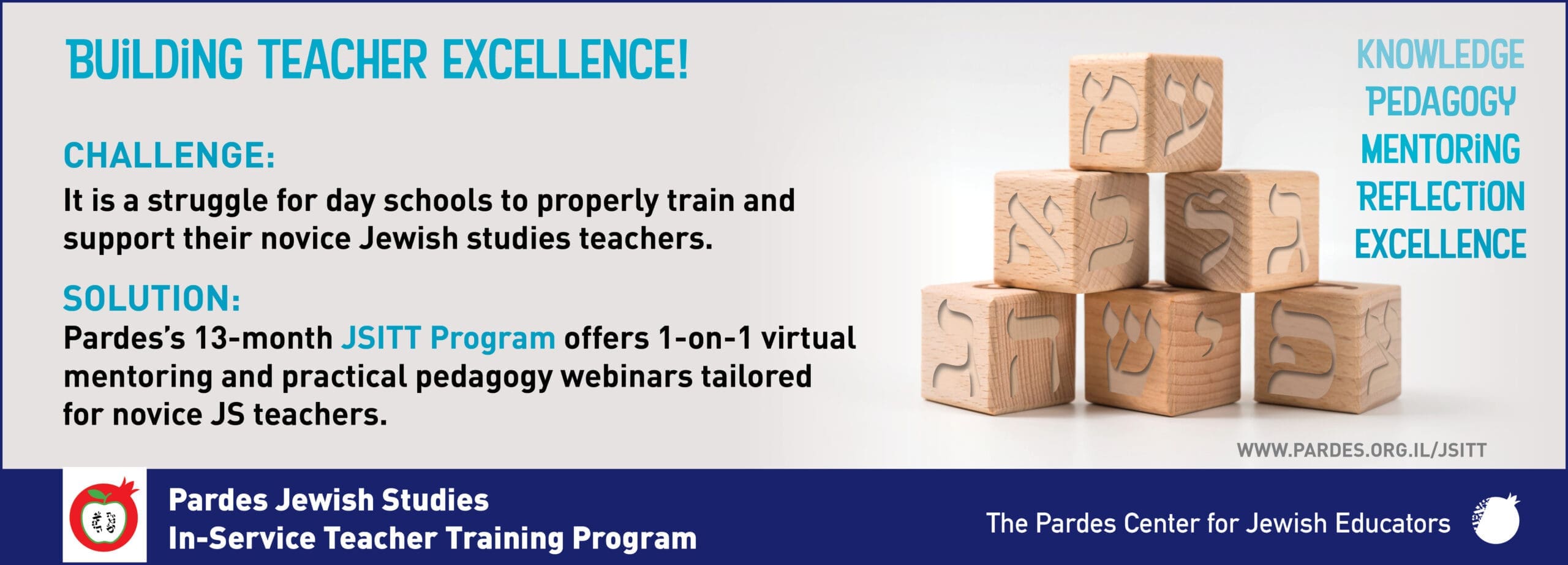Teaching Talmud in Secondary Schools: Masorah and Modernity
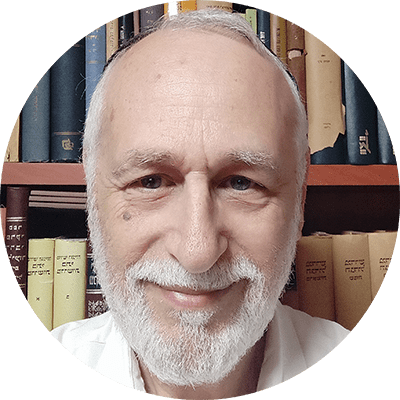
Pinchas Hayman was ordained at Yeshiva University, with a PhD in Talmudics from the Bernard Revel Graduate School. Rabbi Dr. Hayman taught and conducted research at Bar-Ilan University’s departments of Talmud and Education and directed The Lookstein Center for Jewish Education from 1994-1997.
Teaching of Talmud in traditional secondary schools has been a conundrum from the day it was decided to teach Talmud as part of the standard Jewish studies curriculum. Programs for yeshiva high school graduates in Israel and around the world are consistently populated by an overwhelming percentage of students who, even after six years of multiple weekly hours of Talmud instruction in secondary schools, are helpless in the independent study of Talmud. These students are successful independent learners of advanced mathematics, natural sciences, complex technology, and even humanities, but in Talmud, they require an embarrassing degree of spoon-feeding. This reality seems to confirm the assertion by Rav Aharon Lichtenstein, that Talmud was originally intended only for an intellectually talented elite of approximately ten percent of the student population.
This reality, however, is the product of the way in which Talmud is currently taught. Students participate in lessons that frontally teach specific Talmudic content, or in which they read Talmud with servile reliance on modern editions that translate, annotate, and mediate every word, phrase, and logical inference. While that may possibly be considered passive acquisition of Talmudic knowledge, it is certainly NOT to be considered “studying Talmud.” “Study of Talmud” has always meant the acquisition of the textual, literary, and cognitive tools that enable learning of Talmud without extreme mediation. If Jewish educators insist on curricular popularization of Talmud study in secondary schools, then the educational focus must perforce be redirected from student knowledge to student capability. My fifty years of research in this field has taught me that success in independent Talmud study is possible for many more students than Rav Lichtenstein thought, and I claim that this is possible for approximately seventy percent of the student population, but only if two conditions are met:
Why Study Talmud....
Why learn Talmud? Why learn Torah at all? Why teach Jewish culture, history, or Hebrew language? Torah (which means both Torah Shebichtav and Torah Sheb’al Peh, which are inseparable and indivisible) is not just another discipline—it does not sit on the shelf next to mathematics, computer science, and biology. As explained by Rav Kook in the very first chapter of Orot HaKodesh.…
- Talmud curriculum in secondary schools is rich in tools and skills that are well-defined and graded from initial, guided study at the beginning of middle school to independent study by the end of high school, and
- Students are individually guided and diagnostically evaluated along their critical path toward independent learning.
Within the limited scope of this paper, I will define four selected foci for the beginning stages of a Talmud curriculum for secondary schools that enable the transition from knowledge gathering to skills acquisition. Finally, I will refer to a new, free internet tool that provides major assistance in this transition.
A student’s initial exposure to Talmud faces four serious obstacles.
1) Navigation to specific sugyot (discussion units) or sources in Talmud
The traditional (now known as Vilna) Talmud was initially printed in Soncino and Venice in the late 15th and early 16th centuries. The product was simply a linear printing of the content of Talmudic manuscripts. The print product did provide pagination but offered no punctuation of sentences, no consistent, accurate division into paragraphs or sugyot, and no navigational signage enabling a beginner to locate a specific sugya or selection to be studied on a given page. Since the 16th century Venetian edition, Talmud printing has only undergone rudimentary modernization. Today’s students find this printing not only cumbersome but a major obstacle to Talmud study. The Steinsaltz printing attempted a contribution to punctuation, vocalization, and division of the text into topical paragraphs. The punctuation was a valuable achievement, but many of its divisions of the text into sugyot are flawed because it defined sugyot with Western topical criteria, rather than the historical and literary criteria which are the foundations of the Talmudic masorah and the framework for initial Talmud skills-acquisition. The Schottenstein printing of Talmud did not touch the Venetian/Vilna text at all, simply printing a full translation and commentary side-by-side of the text. While the voluminous notes of the Schottenstein edition are certainly praiseworthy, printing the Talmud with a full translation has paradoxically ensured that students will not feel a need nor will they be equipped to learn the text itself without mediation. Various educators have attempted use of the digital environment for mapping Talmudic sugyot but have not paid attention to the parameters of the original Talmudic masorah.
Establishment of a modern, standardized, and preferably digital presentation of the Talmud which is loyal to the original Talmudic masorah is a sine qua non for the building of a skills-oriented Talmudic curriculum for secondary schools.
2) Identification of the varied sources comprising the Talmudic text
The Talmud is not a unitary text. It is a mosaic of sources, ranging from quotations from Mikra (Tanakh), Mishnah (and other Tannaitic sources), Amoraic teachings, and a wide-ranging narration and analysis identified by the Rishonim (the medieval Talmudic commentaries) as stama deTalmuda (often referred to today as shakla vetarya). Each of these four types of sources has its own set of conventions, functions, and textual skills. To read the Talmud linearly as if it were a unitary text not only undermines the masorah, but also effectively prevents comprehension of the text. In my manifold visits to high schools in Israel and abroad, it became clear that the vast majority of students had no idea whatsoever how to distinguish a Tannaitic source from an Amoraic source, or how to separate either of them from the surrounding shakla vetarya. Rabbi Mordechai Eliyahu once told me that anyone who learns a sugya of Talmud linearly without initially scanning and identifying the sources that comprise it will never understand the sugya, an observation which has been confirmed by multiple conversations with other prominent rashei yeshiva.
3) Mapping of the sugya
The Talmud is comprised of over eleven thousand sugyot. These sugyot are independent literary units, each with its own history and unique organization. There are very strict principles in the Talmudic masorah that define what constitutes a sugya, and how a sugya is organized and presented. For example, there are three main sugyatypes which subdivide into several sub-categories, based on which type of source comprises the basis of the sugya and which sources are additions onto the basic sugya frame. These sugya types have nothing to do with their length, as each of the types may include both short and long sugyot. Various sugya types have differing functions in the Talmud, use different logical patterns and criteria, and present varying challenges to the initiate. To know how to learn a given sugya, a student must be able to quickly scan and map a sugya (before any attempt at comprehension) to determine the boundaries of the sugya, and the type and sub-category of the sugya according to the original Talmudic masorah. Learning a sugya for its content without this scanning and mapping ensures misunderstanding of the content by the student.
Learning to scan and map sugyot is a gradual process, beginning with the scanning and mapping of simple sugyot, and continuing over a year or two through more and more complex sugyot. In my experience, this skill may be mastered without difficulty in middle school, setting the foundation for proper study of sugya content in high school.
4) Language, terminology, and patterned discussion
The general impression that the Talmud is an Aramaic text is due to failure in the above three skills areas. More than 60% of the text of the Babylonian Talmud is Mishnaic Hebrew; the Aramaic envelope of the stama deTalmuda gives the student the false impression of a dominating Aramaic textual language. Students need to learn to recognize the typical languages of the four types of sources described above and use the languages as cues for identifying and differentiating the various sources. The various types of sources are marked, introduced, and presented in the sugya with many hundreds of fixed terminologies and well-defined conventions. The terminologies which mark and introduce the various sources differ from regular vocabulary words in their frequency of appearance and their very strict guidelines for use. Some presentation terminologies are only used for sources of Tannaim, others only for sources of Amoraim, and others for sources of stama deTalmuda. Amoraic sources are unique in that they appear almost always in strict generational and institutional order, a characteristic which is key to the identification of sugyot that developed during the Amoraic period; stama deTalmudais characterized not only by its entirely Aramaic language but by the use of dozens of patterned discussion templates which need to be learned as algebraic-like formulae.
These four areas constitute only part of a skills curriculum for initial study of Talmud. Some preparation for study of Talmud really begins with the proper study of Humash in early and middle primary school, or with the proper study of Mishnah and other Tannaitic sources in late primary, and stages in skill development cannot be skipped. Obviously, this will also require proper training of teachers in Talmudic methodology and pedagogy and employing effective diagnostic tools to evaluate the progress of each and every student up the skills ladder toward independent learning.
To help facilitate this learning I have created a digital instrument which is free of charge for all users—Talmud Or Meir. The site is fully bilingual in its user interface and provides ample user guidance and methodological instruction for teacher use. The site includes the entire Babylonian Talmud, divided into its eleven thousand constituent sugyot, each of which is numbered to facilitate navigation and presented in numbered, meaningful lines. Internal navigation within the sugya components is colored in four colors to distinguish sources from Mikra, Tannaim, Amoraim, and shakla vetarya. The text is presented with an indentation system so that students may see, at a glance, what constitutes the basic layer of the sugya and what sources have been added to that basic layer. This enables swift and accurate identification of sugya type, helping students strategize their learning effectively. It is my fervent hope that with this instrument, together with the necessary curriculum design, it will be possible to standardize and employ effective teaching strategies for initial study of Talmud in secondary schools so that the majority of students will become proficient, independent learners of Talmud.



Pinchas Hayman was ordained at Yeshiva University, with a PhD in Talmudics from the Bernard Revel Graduate School. Rabbi Dr. Hayman taught and conducted research at Bar-Ilan University’s departments of Talmud and Education and directed The Lookstein Center for Jewish Education from 1994-1997.
Reach 10,000 Jewish educational professionals. Advertise in the upcoming issue of Jewish Educational Leadership.
Do you want to write for Jewish Educational Leadership? See the Call for Papers for the upcoming issue.


FROM THE EDITOR: Fall 2023
Fascinating. Infuriating. Uplifting. Complex. Boring. Inconsistent. Logical. Brilliant. Eclectic. Irrelevant. Compelling. Frustrating. Inspiring. Ancient. Contemporary. The Talmud evokes all the above, and more. I vividly remember my first encounter with Gemara. I must have been ten years old, and my family was in a bungalow colony in the Catskills. Rabbi Cohen taught Gemara to the older boys, of which I was not, but I asked permission to sit in and listen. I loved following the discussions and debates, even though I couldn’t read any of it and retained none of the content.


The Block Method for Teaching Gemara
By its very nature, teaching Gemara seems to defy everything we know about education. When we teach math, or language, or anything else, we start with the simple and easy-to-grasp aspects of the study area and gradually increase the level of challenge and difficulty. For example, we begin with addition and slowly move on to subtraction, multiplication, and division. We certainly don’t touch algebra until these are firmly in place. One couldn’t imagine a math class that requires knowledge of Pythagoras’ theorem presented to a class that has not yet mastered multiplication.


The Puzzling Talmud
A sixteen-year-old American Jewish day school student named Brandon (a self-chosen pseudonym) reports that he likes studying Talmud. What does he like about it? “I like the process,” he says. “It is kinda like a puzzle, that you have to get each word, and fill it in so it creates the whole text.” Brandon approaches his study of Talmud knowing that it’s going to be hard. Every word might take some effort to decode. Eventually, however, he can put it all together.
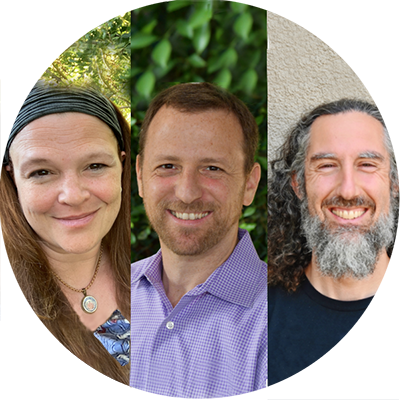

A Multidimensional Approach to Teaching Rabbinics
Pressman Academy is an early childhood through 8th grade school in Los Angeles serving a religiously diverse group of students. The school’s Judaics program, which includes Hebrew language, Jewish history, Tanakh, and daily prayer, affords a maximum of two weekly periods to teaching Rabbinics (in grades 5-8), presenting a significant challenge of what to include and how to approach it.


The Sanhedrin is in Session: Experiencing Rabbinic Literature
On Tuesday morning Rabban Gamliel called the gathered people to order. A letter had arrived from a northern district court in the Galilee which required the attention of the Sanhedrin. Rabban Gamliel took his seat at the head of the semi-circle of esteemed Rabbinic colleagues. R. Yehoshua sat on one side of him and R. Eliezer sat on the other.
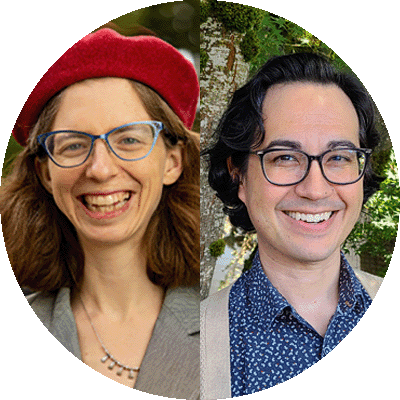

Replacing Relevance with Relationship
A relationship to Talmud study is highly valuable to those who possess it. Few other activities manage to combine elements of intellectual inquiry, spiritual questing, and moral development in the almost alchemical way that the study of Talmud does. And yet, there are a number of hurdles students must overcome in order to develop an independent relationship with the Talmud. First and foremost, studying Talmud in the original Hebrew and Aramaic can feel scary to the uninitiated. Second, the logic of the Talmud is foreign to students at first. Finally, students may wonder what a text from 1500 years ago might have to say to them.
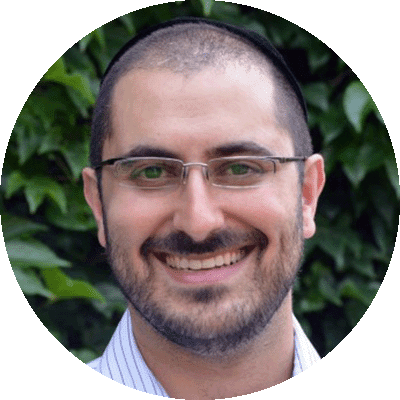

Pre-Mishnah: The Missing Link
I teach 5th grade Judaics at Fuchs Mizrachi School, a Modern Orthodox Zionist school (Cleveland). Upon entering the world of Torah SheBe’al Peh, a student is first greeted by the Mishnah—a complex and sophisticatedly interwoven compendium of Jewish law and wisdom. Students struggle to understand its relevance, how and why it was created, and its importance to the scope of their Torah learning. They ask, “Why are we learning Oral Torah?” and “Why should I care?” but underlying those questions is the more fundamental, “What is the Oral Torah?” While some choose to address this piecemeal over the span of many years, I believe that it is important to address it up front, in an organized manner.


Anatomy of a Gemara Lesson
You have been there, too, right? You thoroughly prepared a Gemara lesson by formalizing how you will explain the shakla vetarya, you concocted attention-grabbing examples and cases, charts to organize the conflicting opinions, and provided a translation and question practice worksheet. You slowly read the Gemara aloud while students annotated the text or completed linear translation sheets. You patiently and clearly explained the concepts and reasoning on a first, second, and even third pass of the reading.
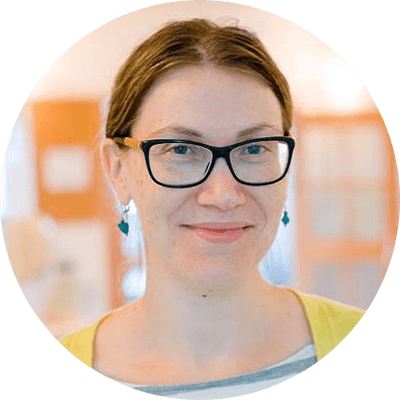

Making the Case for Agada
The rabbis of the Talmud were intentional and thoughtful educators; an example of their consummate pedagogic skill is the way they interspersed narratives into their halakhic writings and teachings. Their use of agadot is an effective teaching tool because, simply put, people love stories. We evolved to tell stories, to become compelled by stories, to connect to the characters, drama, and tension in stories. Stories draw in our students and they have the power to make them care.


Tokhehah Leshem Shamayim
One day, in a 7th grade lesson during our unit on tokhehah (the mitzvah of rebuke), a student shouted out from across the classroom: “This is tokhehah leshem shamayim!” In this moment, with one eloquent and original phrase, this 7thgrader had connected the learning in our current unit of tokhehah with the concept of leshem shamayim (for the sake of heaven) from our previous unit of mahloket (disagreement). This delighted us because it showed that the concepts of mahloket we had been teaching were not just retained for the duration of our unit, or for a test, but were concepts students internalized, held on to, and could apply to new settings and used in unique ways.
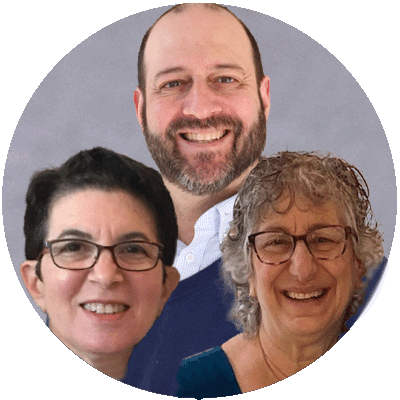

Extending the Reach of Rabbinics
Morah M.’s 5th-grade class is curating a museum exhibit showcasing artifacts that represent family legacy and tradition. The items are described on a placard that explains: These candlesticks were my Bubby’s and now my mother and I use them for Shabbat. When I chose them, I thought of the story about R. Yehuda HaNasi that we learned (Ketubot 103a). Before he died, he told his family that they should continue to set the table the same way, keeping the lamp in its usual place. We’re sort of doing the same thing when we use Bubby’s candlesticks.


Talmud Education for Diverse Learners: Taking the “Long but Short” Road
Teaching Talmud to weaker students can present many challenges not typically found in traditional Gemara classes. Navigating a text in a foreign language, especially one with the unique structure and rules of the Talmud, can be daunting for those grappling with language-based difficulties. Educators must realistically decide which teaching method—skill-based or discussion-based—will best set diverse learners up for success, and how demanding a Talmud course should be for students not likely to pursue this type of Torah learning in the future.


Teaching Talmud Guided by Essential Questions
Standing at the edge of the sea can be an awe-filled experience—the incomprehensibly vast expanse of water with no end in sight is both inspiring and intimidating. We would not consider entering it, whether to swim, sail, surf, cruise, or dive without proper preparation. Similarly, the Sea of Talmud is rich with information, personalities, debates, and much more. It, too, can inspire and intimidate with its vastness and complexity, and we should not expect our students to be able to jump in and navigate it without context and a roadmap. To prepare our students as they embark on their journey into the Oral Torah, we need to define our goals and our strategies for achieving them.
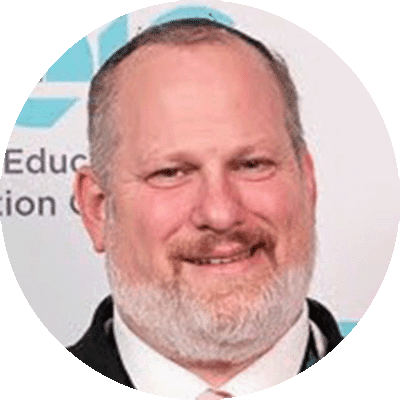

An Alternative Approach for Teaching Talmud
In my first year of teaching, I taught a student whom we will call Yossi. From the time he started 1st grade reading groups, Yossi was placed in the lowest track. This pattern persisted through my 11th grade Gemara class. A few weeks into the first semester of 11th grade, Yossi approached me after class to ask me a burning question which he was embarrassed to ask in front of his peers. He asked, “Who is Rabbi Baraita?” I said, “What do you mean?” He responded, “My past teachers kept explaining ‘the Baraita says…’ Who is Rabbi Baraita and why is he referred to as the Baraita?”


“Wait, What?!” Teaching Jewish Law in a Reform Jewish School
As a teacher at Rodeph Sholom School (RSS), I have for some time considered what it means to teach Torah SheBe’al Peh in a Reform Jewish independent school. What I offer here is a taste of how my colleagues and I have strived to shape our 7th grade Rabbinics unit so that it is aligned with our school’s mission and meets the needs of our specific community of learners. And while every school is unique, I am hopeful that the insights I’ve gained from teaching one unit on the development of Jewish law are instructive for any Jewish day school grappling with teaching Torah SheBe’al Peh.


A Learner-Centered Approach to Teaching Gemara
Traditional methods of teaching Gemara, such as hevruta learning followed by an interactive shiur, have stood the test of time. When teaching beginner students, however, this approach is less common, given their lack of prior knowledge or skills. As a result, many teachers prefer a frontal approach, perhaps projecting the daf on the SMART board and presenting the text phrase-by-phrase while students take notes between the lines of the traditional Vilna text. If hevruta time is used, it is often for the students to review material rather than for them to try to decipher the text. In this article, we are going to propose a method for using a modified version of the traditional approach which can be used for learners starting out on their Gemara learning careers.
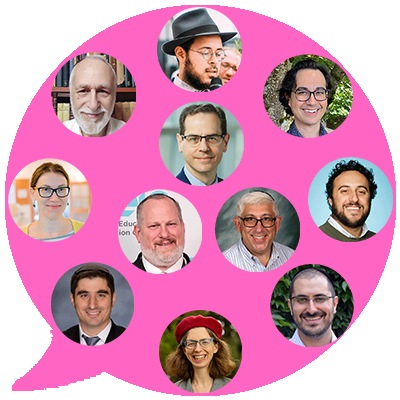

Why Learn Talmud?
Some of the articles in this issue describe the joy of studying Talmud, others break down the complex processes to make it more accessible to students or to enable the students to engage with it meaningfully. And just to make sure that we covered the bases of both the how and the why of Talmud study, we asked our authors to weigh in separately on the question: “Why do you think that day school students should be learning Gemara/Rabbinics?” We invite you to join that discussion.
Fall 2023 Journal Credits
JEWISHEDUCATIONALEADERSHIP
Jewish Educational Leadership is a publication of The Lookstein Center for Jewish Education of Bar Ilan University.
Chana German, Executive Director
JOURNAL STAFF
Hyim Brandes | Editor
Zvi Grumet | Editor-in-Chief
Chevi Rubin | Editor
Shani Sicherman | Copyeditor
Please send correspondence regarding journal content to zvi@lookstein.org.
The Lookstein Center publications present a variety of viewpoints. The views expressed or implied in this publication are not necessarily those of the Center.
EDITORIAL OFFICES AND ADVERTISING
The Lookstein Center for Jewish Education
Bar-Ilan University
Ramat Gan 5290002 Israel
Tel: +972-3-531-8199
US: +1-646-568-9737
www.lookstein.org
© 2023 by The Lookstein Center for Jewish Education.
All rights reserved.



